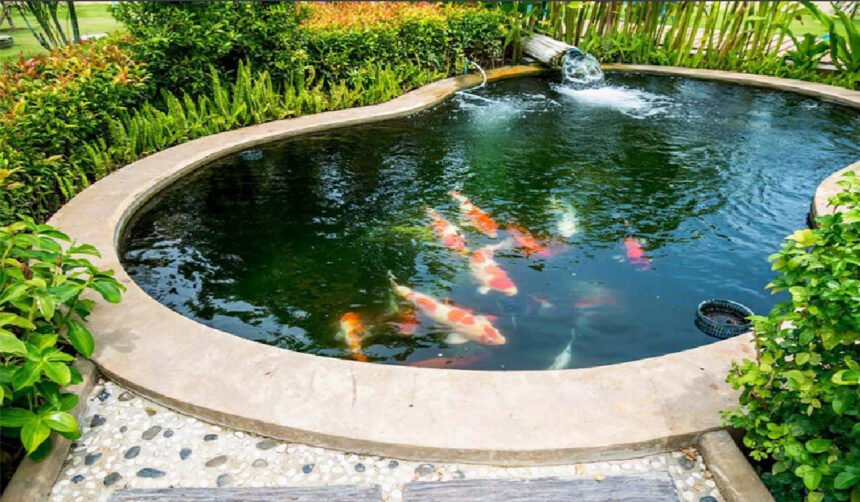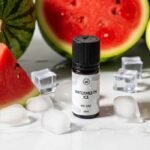Introduction
Water features have long been a central element in landscape design, offering tranquility, movement, and visual interest. Among the many types of water features, ponds are a particularly versatile and rewarding choice. From enhancing the aesthetic of a garden to serving functional purposes like water storage or supporting aquatic ecosystems, a pond can transform any space.
However, the process of designing and constructing a pond is far more complex than simply digging a hole and filling it with water. It involves careful planning, a solid understanding of water dynamics, and a thoughtful approach to design. This is where the concept of pond building becomes both a science and an art. A well-constructed pond not only looks stunning but also functions effectively over the long term.
In this article, we explore everything you need to know about creating a pond—from the planning phase to design options, construction techniques, materials, and maintenance. Whether you’re envisioning a small backyard pond or a large aquatic centerpiece, understanding the principles behind pond building is essential.
The Purpose of a Pond: Form Meets Function
Before embarking on any construction project, it’s important to define the pond’s purpose. This will shape your decisions regarding size, design, depth, and materials.
1. Aesthetic Appeal
Many homeowners and landscape designers add ponds purely for visual interest. Water features can serve as focal points, reflect the surrounding landscape, or add sound and movement to an otherwise static environment.
2. Wildlife Habitat
Ponds attract a wide variety of wildlife, including frogs, birds, insects, and fish. With the right design and planting strategy, your pond can become a thriving ecosystem that supports biodiversity.
3. Water Management
Some ponds are built for functional reasons such as irrigation, stormwater collection, or groundwater recharge. These ponds often serve dual purposes—both functional and aesthetic.
4. Recreation and Relaxation
Ponds can be built for swimming, fishing, or simply as a serene spot to unwind. The design and safety considerations for recreational ponds are often more stringent but highly rewarding when done right.
Planning Your Pond Project
Like any successful construction endeavor, pond building starts with good planning. A well-thought-out plan reduces future complications, keeps costs in check, and ensures the final product aligns with your vision.
Site Selection
Location is everything. Choose a site that:
- Has good drainage
- Receives ample sunlight (for aquatic plant growth)
- Is safe from runoff pollution
- Is not located near tree roots or underground utilities
Pond Size and Depth
The size and depth will depend on your purpose. For instance:
- Ornamental ponds: Often 2–3 feet deep
- Fish ponds: Typically 3–5 feet deep to maintain healthy water temperatures
- Swimming ponds: Can go deeper, up to 6–8 feet in places
- Irrigation or retention ponds: May need to hold thousands of gallons
Shallow edges with gradual slopes are ideal for plant life and easier maintenance.
Shape and Layout
Organic shapes tend to look more natural and integrate better with the landscape. Irregular lines, curved banks, and varying depths help create visual interest and mimic natural ponds.
Excavation and Lining
Once the design is finalized, excavation begins. This process involves:
- Marking the pond perimeter
- Removing topsoil (set aside for reuse)
- Digging to the required depth and shape
- Creating ledges or shelves for aquatic plants
After excavation, the pond must be lined to prevent water loss.
Types of Pond Liners
- Flexible Liners (EPDM, PVC):
- Easy to shape and install
- Good for irregular or natural designs
- Preformed Rigid Liners:
- Best for smaller ponds
- Quick installation but limited in shape
- Concrete Liners:
- Durable and long-lasting
- More expensive and time-intensive
- Clay Liners (Natural ponds):
- Suitable for larger ponds if the soil has high clay content
- Requires expertise to compact properly
Proper underlayment (such as sand or protective fabric) is crucial to prevent punctures and increase liner lifespan.
Water Inflow and Outflow
A pond needs a system to control water levels. This involves planning both inflow and outflow components.
- Inflow sources may include rainwater collection, pumps, or underground pipes.
- Outflow systems (like spillways or drains) manage overflow and prevent flooding.
For recirculating ponds, pumps and filters help maintain water quality, particularly if fish or plants are present.
Adding Plants and Aquatic Life
A pond without life feels static and incomplete. Planting the right aquatic vegetation and introducing compatible wildlife brings your pond to life—both literally and aesthetically.
Aquatic Plants
Plants play a vital role in oxygenating the water, providing shelter, and supporting beneficial bacteria. Common types include:
- Submerged plants: Oxygenators like hornwort
- Floating plants: Water lettuce, duckweed
- Marginal plants: Cattails, irises, reeds
- Deep water plants: Water lilies, lotus
Fish and Wildlife
Goldfish, koi, and native freshwater species are popular pond additions. When introducing fish, ensure your pond has enough depth, oxygen, and shade to support them.
Wildlife like frogs, dragonflies, and birds will naturally find your pond if it mimics a natural ecosystem.
Filtration and Circulation Systems
Healthy water is essential for a thriving pond. Installing the right filtration and circulation system ensures clarity, oxygenation, and reduces algae.
- Mechanical filters remove debris and particulates
- Biological filters promote beneficial bacteria that break down waste
- UV clarifiers help control algae blooms
- Pumps keep water moving, which is vital for oxygen and cleanliness
Choose the right system based on pond size, aquatic life, and overall design.
Lighting and Hardscaping Features
For added visual appeal, lighting can transform your pond at night. Submersible LED lights, solar fixtures, or uplighting around the perimeter creates ambiance and improves safety.
Hardscape elements like rocks, boulders, and edging give the pond structure and a natural look. Paths, seating areas, or small bridges can enhance both function and form.
Maintenance and Upkeep
Ponds are dynamic systems that require regular care. Routine maintenance includes:
- Checking and cleaning filters and pumps
- Managing algae with plant cover or algaecides
- Removing leaves and debris to prevent decay
- Monitoring water levels and refilling when needed
- Checking water chemistry (pH, ammonia, nitrates)
With a well-planned pond building project, maintenance becomes more manageable and less frequent over time.
Common Pond Building Challenges
While rewarding, constructing a pond comes with potential obstacles:
- Leaks due to poor liner installation
- Poor drainage or runoff contamination
- Excessive algae growth from nutrient imbalance
- Invasive plants overtaking native species
- Structural erosion around the pond’s edge
These issues can often be avoided with proper planning, quality materials, and professional guidance.
Conclusion
A well-designed pond is more than just a landscape feature—it’s a living, breathing environment that enriches any space. Whether it’s for beauty, function, or ecological value, pond building is a transformative process that rewards careful planning, smart design, and consistent upkeep.
From the initial idea to excavation, lining, planting, and long-term care, every step matters. With the right approach, your pond will serve as a serene and sustainable centerpiece that adds life and value to your property for years to come.
By understanding the core principles of pond building, you can confidently create a water feature that reflects your vision and supports a thriving natural habitat.
For More Information, Visit Dotmagazine








